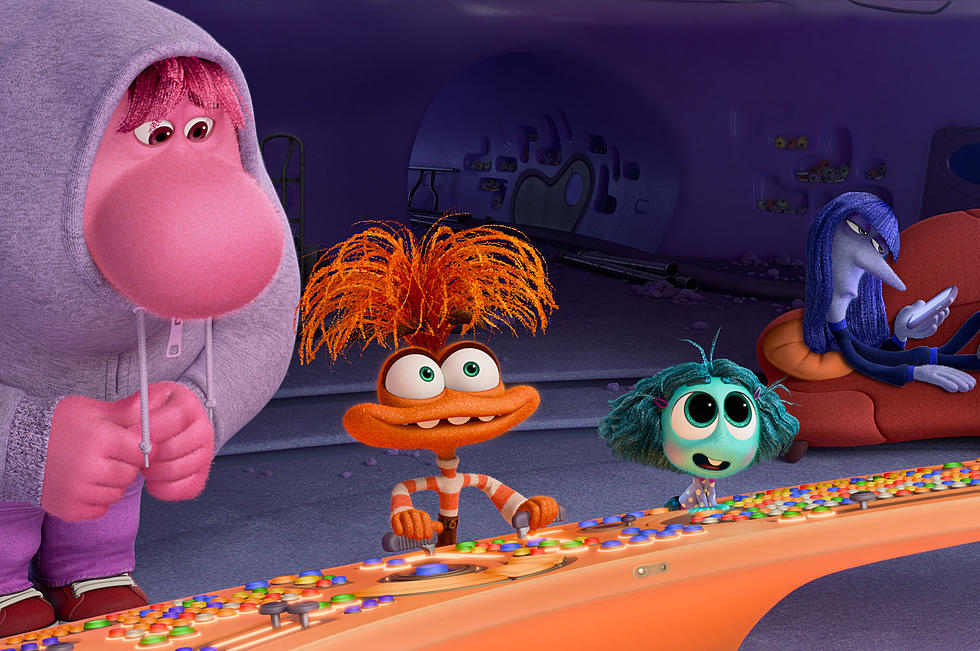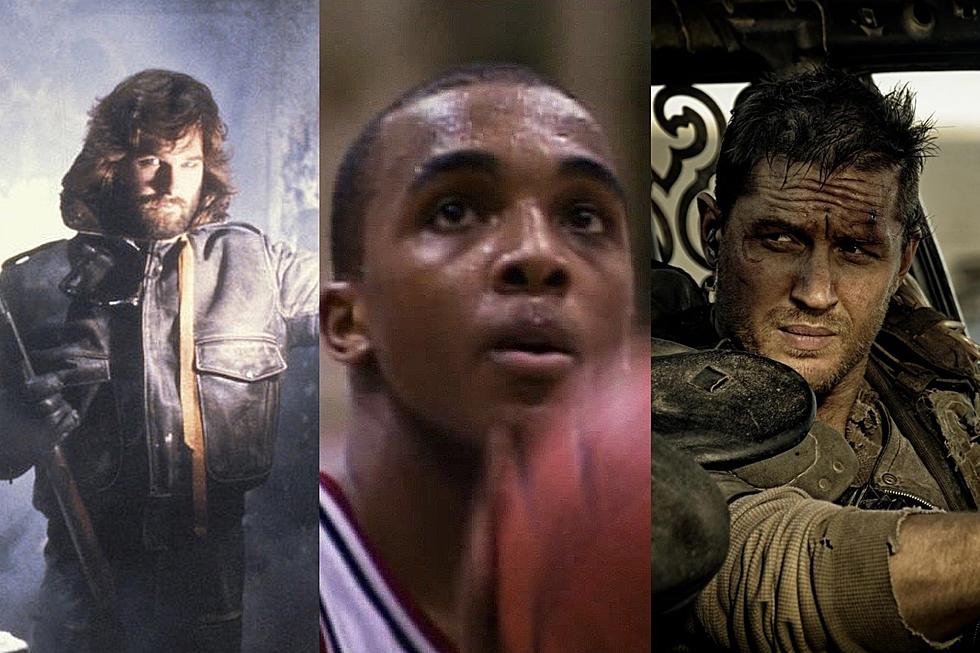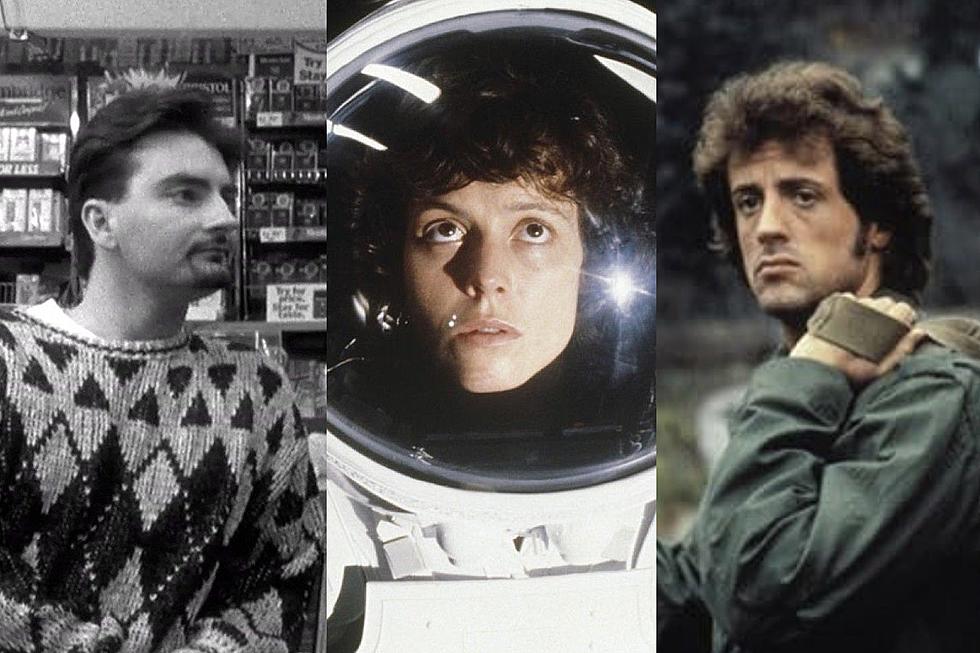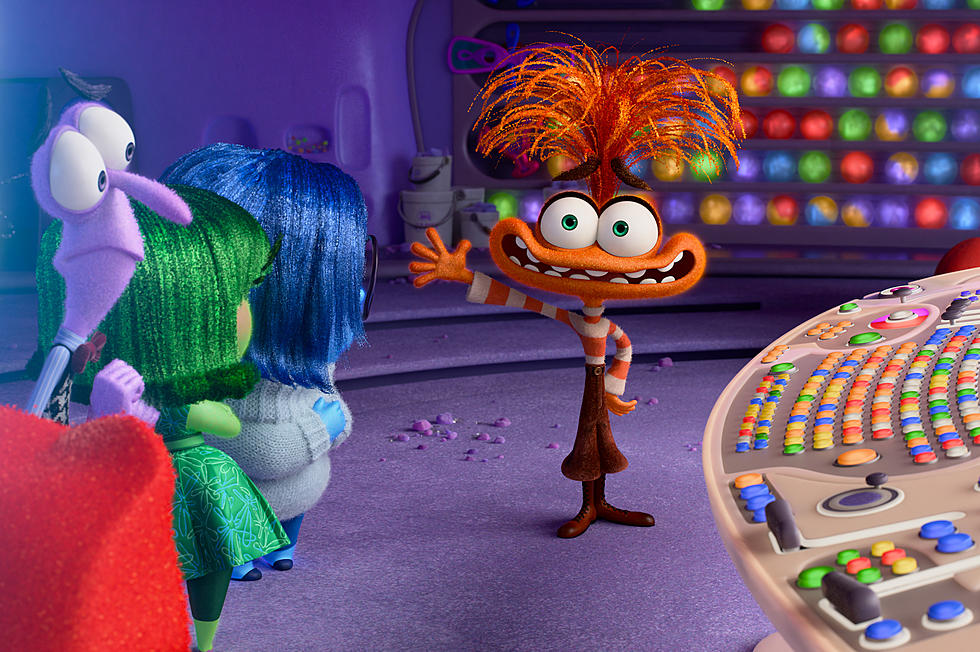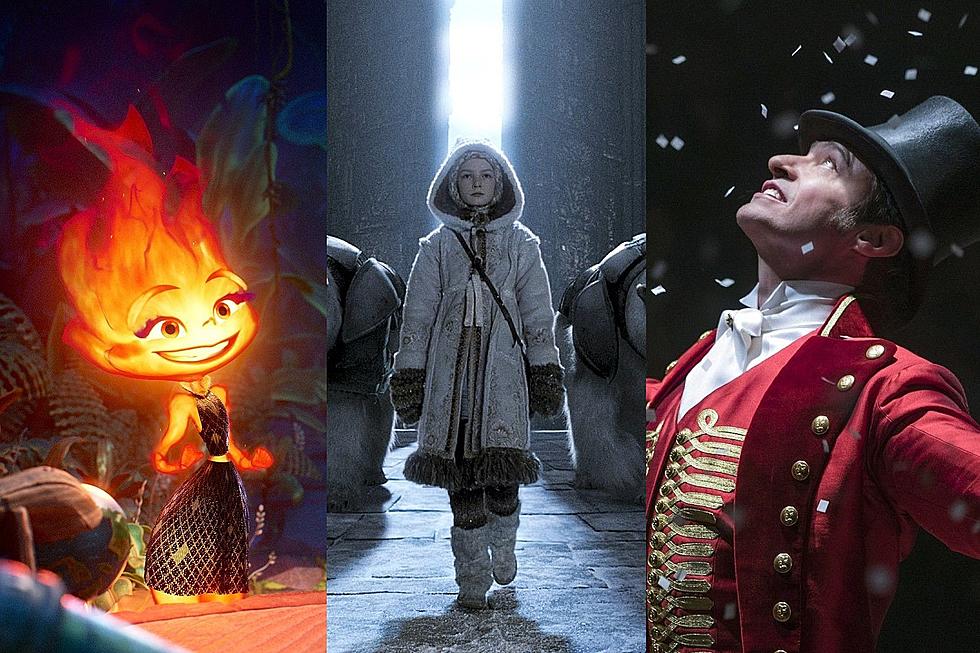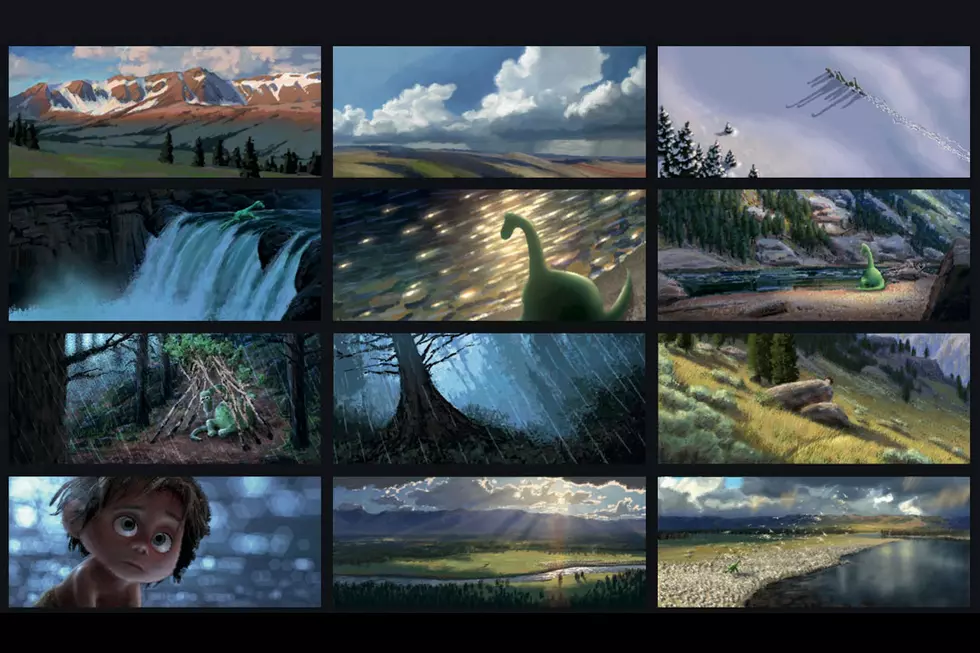
How Pixar Was Able to Save ‘The Good Dinosaur’ From Extinction
Making most Pixar movies is a very lengthy process. The average Pixar movie takes about 4-5 years to make. Inside Out, for example, was in production for about four-and-a-half years. It’s a highly complicated and involved undertaking that, beyond the usual research, design, writing and workshopping, includes countless hours of rendering time for complex animation and visual effects. Pixar really believes in spending time to make things absolutely perfect. It’s a lengthy process, but it’s that way for a reason.
But, after a completely creative reboot, numerous layoffs and a looming release date, first-time director Peter Sohn and his team or artists, writers, designers and technicians had just 21 months to get The Good Dinosaur, literally Pixar’s biggest movie ever, ready for theaters.
This is their story.
Sohn first began working on The Good Dinosaur in 2009 as the film’s co-director. The project (or “show” as Pixar would have you refer to all their films) was based on an original idea by Bob Peterson, who served as co-director for Up and would be making his feature directorial debut. In the summer of 2011, a release date was revealed (November of 2013) and the first footage of the film was shown at Disney’s biennial D23 conference in Anaheim.
If you were in attendance and saw any of that footage, you will be seeing a completely different movie when The Good Dinosaur finally opens in theaters next month.
In August of 2013, Pixar removed Peterson as director of The Good Dinosaur just a few months before it was set to open in theaters. An official reason was never offered, but Pixar president Ed Catmull told The Los Angeles Times, “Sometimes directors are so deeply embedded in their ideas it actually takes someone else to finish it up.” Other reports claimed that Peterson never came up with a third act that satisfied the Pixar brain trust. Whatever the cause, Peterson was out (though he still works at Pixar and is reportedly developing another original project).
The Good Dinosaur was too far along to completely cancel, as Pixar had previously done with the lizard-themed Newt. Besides, Chief Creative Officer John Lasseter knew there was something there, even if it was at the very basest level: the story of a boy and his dog (in this case, the boy is Arlo, a young dinosaur, and the dog is a human boy, named Spot).
“I missed a lot of my kids growing up....I asked my wife, ‘Have I really been gone that long?’ And she said, ‘Yes!!’”
So, Pixar pushed The Good Dinosaur back to November 25, 2015, leaving 2014 as the first year without a Pixar movie since 2005. It was a difficult decision not only on a creative level, but financially as well. The studio was forced to lay off approximately 67 employees as a result of the shift. At first, an all-star team of Pixar’s finest pitched in to try and fix various aspects of the film, before Sohn was eventually promoted to director and given a near impossible task: completely reboot this movie and get it ready for theaters in less than half the time of a normal Pixar production.
“It was grueling. I didn’t have a lot of confidence in myself in the beginning,” Sohn confessed over coffee recently inside one of the story rooms where his new version of The Good Dinosaur was hatched. “Can I really do this?”
Making matters more difficult is that Sohn was not only having to replace a movie, but replace a friend.
“It was emotional. But I felt like I had helped Bob build this thing and I wanted to try and honor his original vision […] He’s still here and I still love him a great deal.”
Sohn kept Peterson’s original vision with him — a boy and his dog story, told via a dinosaur and a boy — but quickly realized he would have to make the story his own. The crux of the original film, “more of a Billy Elliott type story,” was jettisoned to make Pixar’s first western, a genre inspired by Sohn’s visual research trips to Montana.
Sohn, an immensely talented character designer, kept Arlo, the Apatosaur lead character, but changed much of the original character’s design. Originally Arlo was older, in his mid-20s, and much longer, taller and leaner. Sohn wanted to go younger with Arlo, inspired by his own feelings of ineptitude while ranching in Big Sky Country. The new character is about 16-year-old, but his movements and behavior are modeled after an 11-year-old human. Gone is the big long neck and tail of a classic dinosaur design in favor of a more stylized Arlo, who’s visual base was a mix of a camel and giraffe.
Also, gone was the entire script. Kelsey Mann and Meg LeFauve were asked to come over from their current projects (Mann had just wrapped on Monsters University and was looking forward to a welcome vacation, while LeFauve was working on Inside Out) to develop a new script without any of the luxury of time they’re normally afforded.
“I was nervous, for sure,” says Mann. “The only way we were going to be able to do it in this amount of time, was to do everything completely differently.”
LeFauve admits the looming release date was “intimidating” but adds that it quickly turned to excitement, albeit in a very weird way. “That was the crazy fun of it. It’s such a challenge, what can we learn from doing it this fast?”
As it turns out, there was a lot to learn.
One of the core ideas of the film was to have the cartoonish dinosaurs contrasted against an almost photoreal background, though the Pixar artists bristled at the term “photoreal” (they prefer “painterly realism” which allows for more of a margin for error). Sohn and his Director of Photography, Sharon Calahan, felt that realism would really make the characters, Arlo specifically, pop off the background. To help achieve the stunning backgrounds, Sohn and his team downloaded United States Geological Survey satellite photos of 65,000 square miles of the northwest, along with their topographical data. When inputted into their computers, this gave them a 3D environment that could look out over 50 miles into the distance, important for Sohn who wanted the cartoony Arlo to feel and look lost among the setting.
While all this data looks beautiful (and it really does), it also took up a lot of space and time. The landscapes gobbled up 300TB of server space, 10 times the entirety of Monsters University. This is on top of the over 900 visual effects shots (which include the movements of the river, rain, smoke and clouds), twice as many as have ever been used in a Pixar movie. Just one sequence of Arlo getting swept away by a river has more data than all of Cars 2. This extra data, while necessary for Sohn’s vision, also meant insane render times for a project that desperately had no time for insane render times.
Which, as FX Supervisor Jon Reisch explains, basically meant one thing: “Every major system had to be upgraded.”
While Pixar’s technical wizards working on how to perfect the look of the film, Sohn was back trying to fix the story. To better attack the script, Sohn and Mann, his Head of Story, decided to change the way a Pixar production normally works. Shuffling back and forth between offices was time they didn’t have, so they created a new “bullpen” in a converted conference room at the top of Pixar’s Steve Jobs Building. Inside, Sohn says, writers, artists and designers were “free to say anything.” The idea was to quickly and most efficiently get to the “true feelings” of the script, as Mann called them.
But, though the Pixar process was remarkably collaborative, everyone knew that if Sohn was going to make this movie, it was going to be intensely personal —Sohn, who describes himself growing up as a “chubby Asian kid”, wanted to tell the story of a young boy who feels different and isolated from everyone around him — and only he knows what’s inside his heart.
“There was a story sequence that we had to look at that I had seen a number of times. It’s Arlo’s first interaction with Spot. Finally, I had to say, ‘Let me just open my heart and gut to this to see how I really feel’ and not think about production and all that stuff. I just had to watch it, trust my gut and go, ‘What did I just feel?’ That helped me a lot.”
It’s about two months until The Good Dinosaur finally opens in theaters. Though Sohn is taking a break to talk about the film, it’s shortlived. He had just arrived from Skywalker Sound where he was working on the score and still had more work to do on the film’s ending. (Though Sohn wanted to show the entire film, he only had about 40 minutes of footage to share.) He was exhausted, but upbeat. Stressed, but proud.
The accelerated production schedule of The Good Dinosaur would’ve been tough on anyone, but it was especially tough on a first-time director, especially one with a young family. “I missed a lot of my kids growing up.” He pauses, then continues, “This past year, I remember seeing my son, Sam who is two and a half, and thinking how much he had changed. I almost didn’t recognize him. I asked my wife, ‘Have I really been gone that long?’ And she said, ‘Yes!!’”
Despite how personal the film ultimately wound up to be, Sohn knows he couldn’t have done it without his team. “Animation is not an auteur business. I couldn’t take credit for all of this. When I watched the footage with you yesterday, it wasn’t about me directing it, it’s all about looking at what all these people have given to me.”
It was grueling and brutal and crazy and intense and as many other words you could find in your thesaurus, but even now, Sohn knows all that hard work was worth it.
“It’s all just a part of trying to put your whole heart into something.”
More From ScreenCrush
